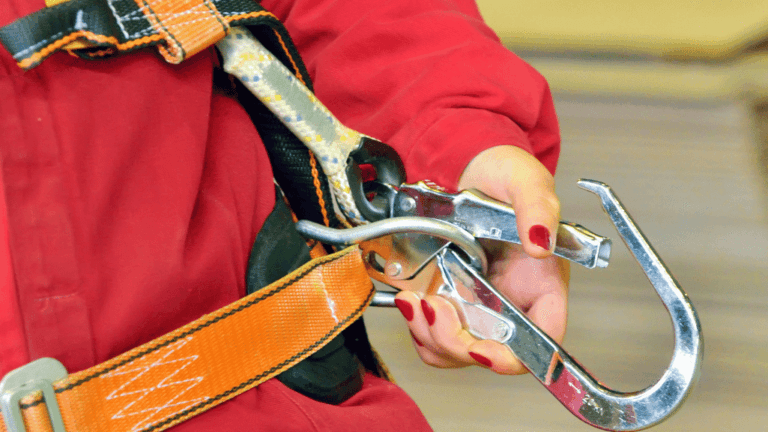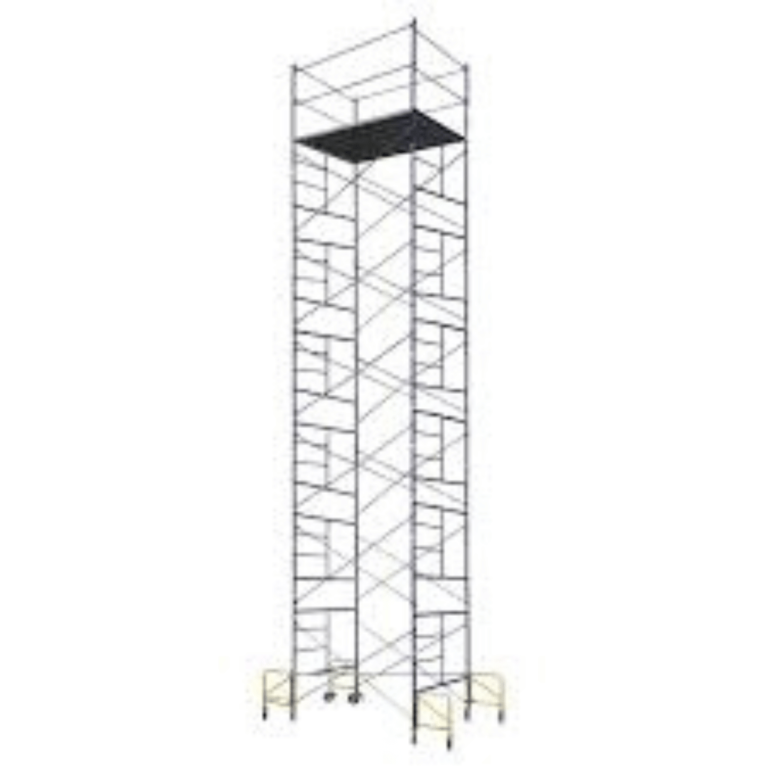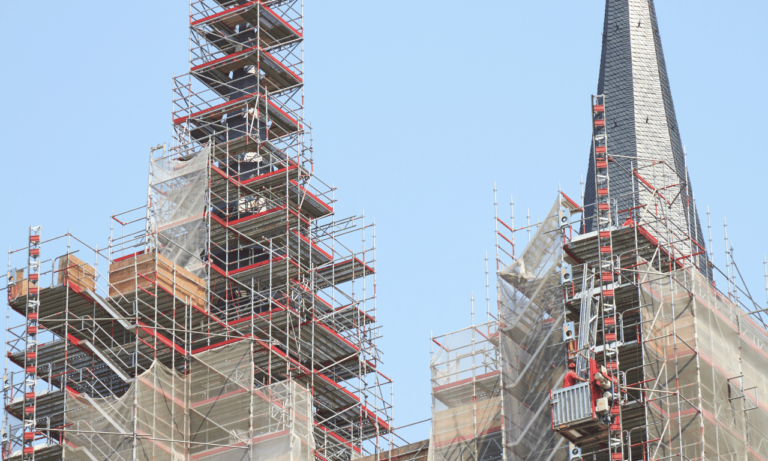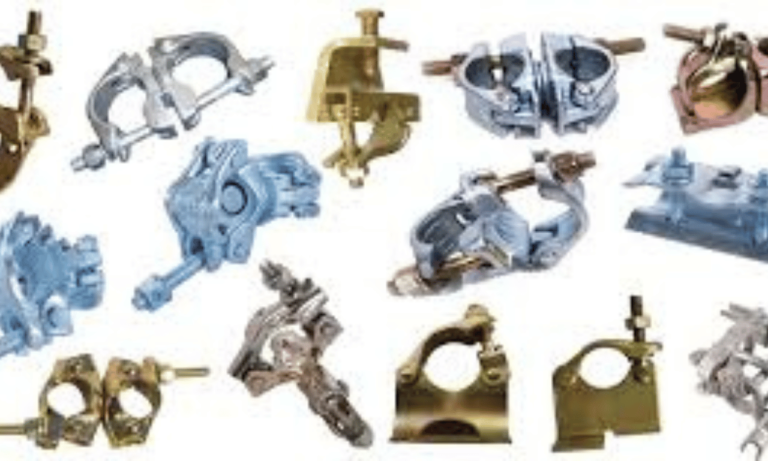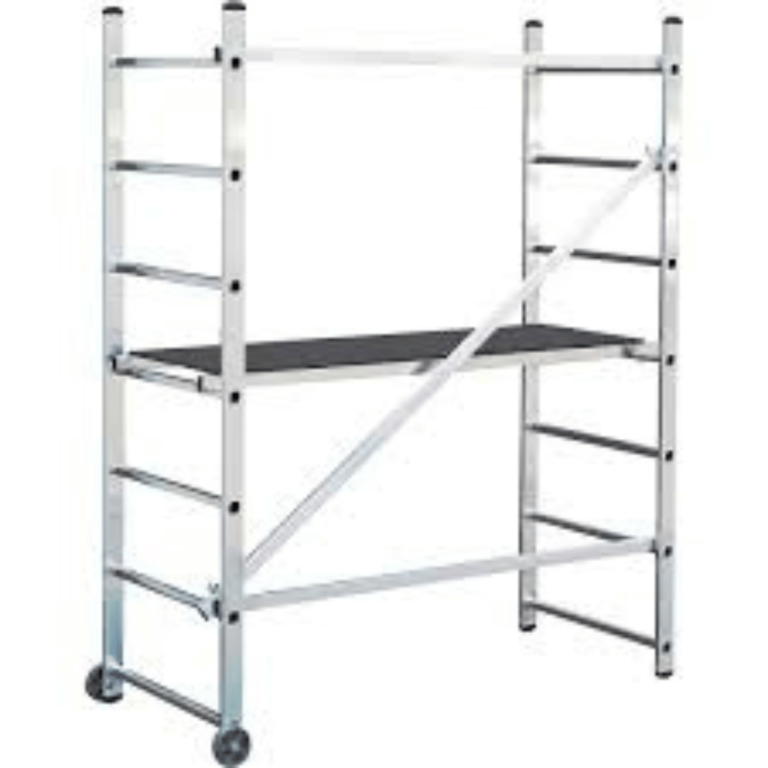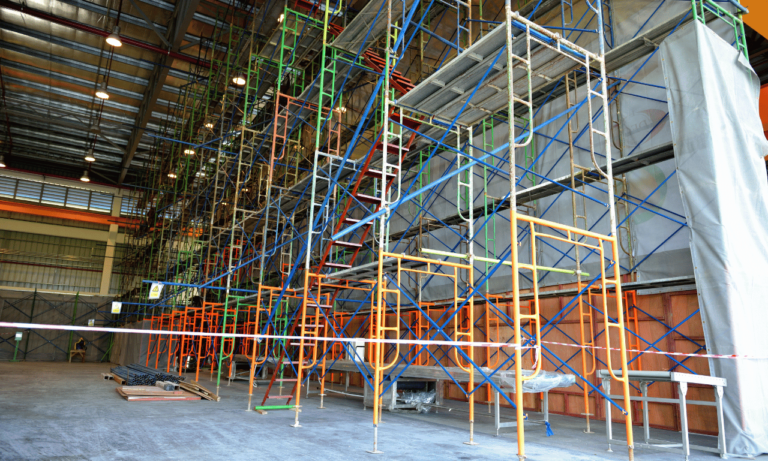Phone:
(+65)8319-0742
Ensuring the safety and stability of scaffolding is key. The scaffold load capacity is the weight it can handle safely. This depends on its design, materials, and setup.
Different scaffolds have different weight limits. For example, a tube and coupler scaffold can hold up to 10,000 lbs. Frame scaffolds might only support 5,000 lbs. System scaffolds can handle around 8,000 lbs. It’s important to think about both the scaffold’s weight and the weight of workers and materials.
Going over the scaffold’s weight limit can cause serious problems. This includes instability, collapse, and wear. It can also lead to hazards for workers and the area around the scaffold. OSHA has rules to prevent these issues, like testing and inspecting scaffolds regularly.
Following safety rules and guidelines is vital. It helps create a safe work environment. Training, maintenance, and careful load management are key to safety and success on construction sites.
Key Takeaways
- Scaffold load capacity refers to the maximum weight a scaffold can safely support.
- Weight capacity varies based on what is a scaffold’s maximum intended load, materials, and configuration.
- OSHA mandates load testing, documentation, and regular inspections for scaffolds.
- Exceeding the maximum intended load can lead to structural instability and hazards.
- Proper training and adherence to safety guidelines are crucial for preventing accidents.
Understanding Scaffolding Basics
Scaffolding is key in construction, giving workers a safe place to work at heights. Knowing the basics of scaffolding is vital for worker safety and project success.
Definition of Scaffolding
Scaffolding is a temporary setup for workers and materials during building, upkeep, or repairs. It offers a safe spot at high places, helping workers reach areas that are hard to get to.
Common Types of Scaffolding
Construction uses many scaffolding types, each for different jobs and weights. Some common ones are:
- Frame or fabricated scaffolds
- Tube and coupler scaffolds
- Outrigger scaffolds
- Bracket scaffolds
- Tower/rolling scaffolds
- Horse scaffolds
- Ladder jack scaffolds
- System scaffolds
The right scaffolding depends on the work, structure height, and needed weight support. For example, heavy-duty scaffolds can hold up to 75 pounds per square foot. Light-duty ones can handle up to 25 pounds per square foot.
Purpose of Scaffolding in Construction
Scaffolding is crucial in construction for several reasons:
- It gives a safe, stable work area at heights.
- It lets workers reach areas that are hard to get to.
- It makes moving materials and tools easier.
- It boosts work efficiency and safety on sites.
Using scaffolding helps construction teams work better and safer. Learning about scaffolding basics is key for following safety rules and getting the most from this important tool.
Scaffolding is not a luxury; it is a necessity. It is the foundation upon which we build our dreams and the platform that elevates us to new heights.
The Importance of Maximum Intended Load
Understanding the maximum intended load is key to scaffolding safety. This load is the total weight a scaffold can safely hold. This includes workers, tools, equipment, and materials. Scaffold components can usually handle their own weight and about four times the maximum intended load, in pounds per square foot.
What Maximum Intended Load Means
The maximum intended load is set by the manufacturer or engineer. It considers the total weight of people, tools, and materials. It’s important to get this load right to keep the scaffold safe and prevent overloading.
Why It Matters for Safety
Sticking to the maximum intended load is crucial for safety. Overloading can cause workers to fall, get hurt, or even make the scaffold collapse. A scaffold is overloaded if it bends too much under the weight.
Working on scaffolding covered in snow is also risky. It’s hard to guess how much extra weight it adds.
“The safe working load calculation includes considering the scaffold weight capacity, maximum intended load, weight of scaffold, and a safety factor of at least 2.” – CanDo Scaffolding
Consequences of Exceeding the Load
Going over the maximum intended load can be very dangerous. It makes the scaffold unstable, risking worker safety. It can also cause the scaffold to collapse, leading to injuries, deaths, and project delays.
To avoid these risks, always check the scaffolding before starting work. This ensures it’s safe to use.
- Light-duty scaffolds have a load capacity of 120 kg/square allowance.
- Medium-duty scaffolding supports up to 240 kg/square allowance.
- Heavy-duty scaffolds are rated for loads over 240 kg/square allowance.
Factors Affecting Maximum Intended Load
Ensuring scaffolding safety and stability is key. Knowing what affects a scaffold’s load is vital. Its load capacity depends on materials, design, structure, and weather.
Material Composition of the Scaffold
The materials used in scaffolding greatly impact its load capacity. Strong steel and aluminum scaffolds can hold more weight than those made from weaker materials. For example, light-duty scaffolds are good for painting and can support up to 250 pounds at the center.
Medium-duty scaffolds, used for plastering and light masonry, can handle at least 50 pounds per square foot. This shows how important the material choice is for a scaffold’s strength.
Design and Structural Integrity
A scaffold’s design and structure are also crucial. It should have durable parts like tubes and platforms. OSHA rules say the scaffold must be able to bear at least four times the maximum intended load.
This safety rule helps ensure the scaffold stays stable, even under unexpected loads. A well-designed scaffold is key to safety.
“The deflection method is used to ensure that the scaffold’s platform does not deflect more than one-sixtieth of the span under the intended load.”
Environmental Conditions Impacting Load
Weather like wind, rain, and snow can affect a scaffold’s load capacity. Strong winds can push the scaffold, while rain or snow can add weight. It’s important to think about the weather when setting up scaffolds.
Adding extra bracing or anchoring might be needed to keep the scaffold stable in bad weather. This ensures safety and reliability.
By focusing on materials, design, structure, and weather, construction teams can build safer scaffolds. Regular checks and following rules are also essential to keep the scaffold safe.
Regulations and Standards for Scaffold Loads
Keeping workers safe on scaffolds is a big deal in construction. The Occupational Safety and Health Administration (OSHA) and the American National Standards Institute (ANSI) have set strict rules. These rules help prevent accidents and keep the work area safe.
OSHA Guidelines Overview
OSHA’s scaffold rules, from 2002, are very strict. They cover things like fall protection, guardrails, and how much weight scaffolds can hold. The 4 to 1 rule is key. It says scaffolds must be strong enough to hold four times the weight they’re meant for.
“Scaffolding equipment should be able to withstand support 4 times the maximum intended load without failure.”
ANSI Standards on Scaffold Safety
ANSI adds to OSHA’s rules with more safety guidelines. They talk about design, building, and using scaffolds. ANSI divides scaffolds into three types based on their load capacity. They also stress the need for regular checks, proper training, and quality materials.
Importance of Compliance in Construction
Following OSHA and ANSI rules is a must in construction. Not following them can lead to serious problems like injuries, delays, and legal issues. By focusing on safety, companies protect their workers and keep their business strong. It’s important to train, inspect, and keep records of scaffold loads regularly.
When using wooden scaffolding, knowing the rules for planking is key. This includes using the right lumber and following span limits. By following these rules, the construction world can make a safer place for everyone working on scaffolds.
Calculating Maximum Intended Load
Ensuring scaffolding safety means knowing its load limit. This involves checking many factors and following set rules. Knowing a scaffold’s load limit helps avoid accidents, keeps workers safe, and follows safety laws.
Load Evaluation Methods
Experts use several methods to find a scaffold’s load limit. They look at manufacturer specs, do load tests, and use engineering math. Specs tell us what a scaffold can hold. Load tests check how it handles weight. Engineering math gives a detailed look at what it can carry.
Tools for Load Calculation
There are many tools to help with scaffold load calculation. Load charts give quick answers based on scaffold type and size. Special software does complex math, like for wind and earthquakes. These tools make it easier and more accurate to figure out a scaffold’s load.
“Calculating the maximum intended load is a critical step in ensuring the safety and integrity of scaffolding structures. It requires a combination of expertise, adherence to industry standards, and the use of reliable tools and methods.” – John Smith, Scaffold Safety Expert
Engaging Professionals for Accurate Assessment
While tools and methods are key, getting help from experts is just as important. Structural engineers and scaffold pros know how to figure out a scaffold’s load limit. They look at design, materials, and weather to give a full report. Working with these experts helps meet safety standards, reduces risks, and makes scaffolding work better.
Getting a professional scaffold evaluation is a smart move. It keeps workers safe and helps projects succeed. Accurate load calculations mean better planning, faster completion, and avoiding expensive accidents or delays. As the construction world focuses on safety and efficiency, knowing the exact load limit is vital.
Best Practices for Scaffold Use
Using scaffolds safely is key to keeping construction sites safe. By following scaffold safety practices, workers can avoid accidents and injuries. This is important when working at heights.
Regular Inspections and Maintenance
It’s vital to have regular checks on scaffolds. These checks should be done by experts. OSHA says scaffolds must be inspected at the start of every shift by a “Competent Person.”
During these checks, several things need to be looked at:
- Scaffold platforms must be fully decked or planked
- Scaffolds must be able to hold up to four times their maximum intended load
- Guardrails must be installed on supported scaffolds at heights over 10 feet
- Planking installed on a scaffold must support at least four times its intended load
Keeping scaffolds in good shape is important. This means replacing any worn or damaged parts. When cleaning scaffolds, use a low setting on pressure washers to avoid damage.
Training Workers on Scaffold Safety
Teaching workers about scaffold safety is crucial. It helps prevent accidents and follows OSHA rules. Training should cover:
- Hazard recognition and control
- Proper use of scaffolds
- Fall protection measures
- Load limits and weight distribution
Fall Protection violations are a significant concern, with falls resulting in the highest number of workplace fatalities and serious injuries.
Good training ensures workers know how to stay safe on scaffolds. This is important for everyone’s safety.
Documenting Scaffold Load Limits
Scaffold documentation is very important. It helps keep everyone safe by clearly showing load limits. OSHA says scaffolds must support at least four times the maximum intended load.
Keeping records of inspections, maintenance, and any changes is also crucial. These records are important in case of an accident or safety check.
Real-Life Implications of Load Management
Understanding load management is key for worker safety and project success. By looking at scaffold failures, we learn the dangers of bad load management. We also see why following safety standards is so important.
Case Studies on Load Failures
In New York City, a scaffold collapse hurt several workers. It was overloaded, breaking its structure. This shows how vital it is to follow load ratings, as OSHA rules state.
Learning from Industry Examples
A scaffold collapse happened because of bad materials. The parts didn’t meet strength standards. This teaches us the importance of using quality materials like galvanized steel.
Regular checks and training are also key. They help spot problems and ensure materials are good.
The Future of Scaffold Safety Practices
New tech and safety features are coming to improve scaffolds. For example, load monitors can warn of overload. This lets workers act fast to avoid accidents.
Better training and strict safety rules are also on the way. These changes aim to make construction sites safer. With these steps, the industry can reduce accidents and make work safer for everyone.







